What Difference Parboiled Rice vs Brown Rice
- Muhammad Riaz
- Jul 25, 2023
- 10 min read
Updated: Jan 6

Navigating through the diverse world of rice varieties can often feel like a culinary odyssey. As a globally cherished staple, rice comes in many shapes, colors, and forms, each with its unique appeal and nutrient profile. Among the most popular types of rice are parboiled rice and brown rice. While these two varieties may seem similar at first glance, they each bring their own distinct attributes to the table in terms of flavor, texture, and nutrition.
When making a rice choice, it's important to consider factors such as your personal health goals, dietary needs, taste preference, and even the type of dish you plan to create. Both parboiled and brown rice have earned their place in the pantries of health-conscious consumers and seasoned chefs alike. However, knowing the differences between them can help you decide which one aligns with your specific needs and palate.
In this in-depth guide, we will unravel the world of parboiled and brown rice, comparing them on various grounds, including their processing, nutritional value, taste, cooking methods, and more. Our aim is to provide you with comprehensive knowledge about these two types of rice so that you can make an informed choice the next time you're faced with the "parboiled rice vs brown rice" conundrum. So, let's embark on this enlightening journey and delve into the fascinating realm of rice.
Understanding Rice
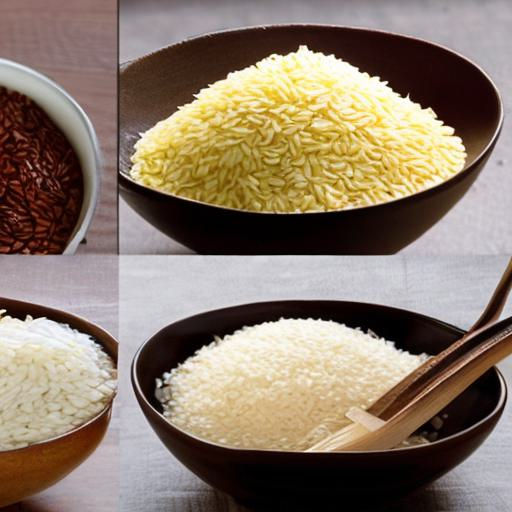
Rice is one of the world's oldest and most revered foods. This humble grain has been a dietary staple for centuries, feeding populations across continents. Originating in Asia around 10,000 years ago, rice has since spread globally, adapted into countless varieties, and ingrained itself into various cultures and cuisines.
Rice grains come from the species Oryza sativa (Asian rice) or Oryza glaberrima (African rice). There are more than 40,000 varieties of rice that grow across every continent except Antarctica. This staggering diversity can be classified into three broad categories based on grain size—short, medium, and long-grain rice.
The versatility of rice is unparalleled. It serves as a canvas for flavors in countless dishes, from the savory risotto of Italy to the sweet rice puddings of India, from the sushi rolls of Japan to the hearty jambalayas of Louisiana. It's no surprise that about half the world's population relies on rice for up to 80% of their daily caloric intake, particularly in Asia and Africa.
However, not all rice is created equal. Differences in processing methods and degrees of milling result in various types of rice, each with a unique nutrient profile, texture, and flavor. Today, we focus on two such types—parboiled rice and brown rice—and explore the attributes that set them apart.
What is Parboiled Rice?
Parboiled rice, also known as converted rice or easy-cook rice, undergoes a unique process before it reaches your plate. Contrary to what its name might suggest, parboiled rice is not pre-cooked or partially boiled in the conventional sense. Instead, it goes through a process known as parboiling, which involves three main steps: soaking, steaming, and drying.
The parboiling process begins with harvesting, after which the harvested paddy is hydrated. It is then subjected to steam pressure, which forces the water-soluble vitamins and minerals from the bran into the endosperm of the kernel. This process ensures that the rice retains a larger amount of its natural nutrients, even after milling. Finally, the paddy is dried and milled, removing the husk and bran layer, resulting in parboiled rice.
This unique processing method gives parboiled rice its signature golden or amber color. The grains are somewhat translucent rather than the opaque white of regular milled rice. Another distinctive feature is its longer cooking time compared to white rice and a firmer texture once cooked.
Parboiled rice holds its shape well and stays separate when cooked, making it a preferred choice for dishes like pilafs, salads, or any recipe that calls for distinct, separate grains. Its nutrient retention and low glycemic index make it a popular choice among health-conscious consumers.
What is Brown Rice?
Brown rice, often hailed as a nutritional powerhouse, is a whole grain that has only its hard, inedible outer hull removed. This minimal processing allows it to retain its nutrient-dense bran and germ layer, which is where most of the grain's nutrients are stored.
The presence of the bran gives brown rice its distinctive nutty flavor and chewy texture. It also imparts a light brown color to the grains, hence the name "brown rice."
Nutritionally, brown rice is a rich source of dietary fiber, essential fatty acids, and a host of vitamins and minerals. It is particularly high in B vitamins, magnesium, and selenium. The high fiber content contributes to a feeling of fullness, which can be beneficial for weight management.
In terms of cooking, brown rice takes a bit longer to prepare than white rice due to the presence of the bran layer. However, the resulting grains are deliciously nutty and have a satisfying chew that many people enjoy.
Whether incorporated into stir-fries, used as a base for grain bowls, or served alongside a main dish, brown rice adds a wholesome, hearty component to any meal. Its natural goodness and health benefits make it a favorite choice among health-conscious consumers and those following plant-based diets.
Parboiled Rice vs Brown Rice: Nutritional Comparison
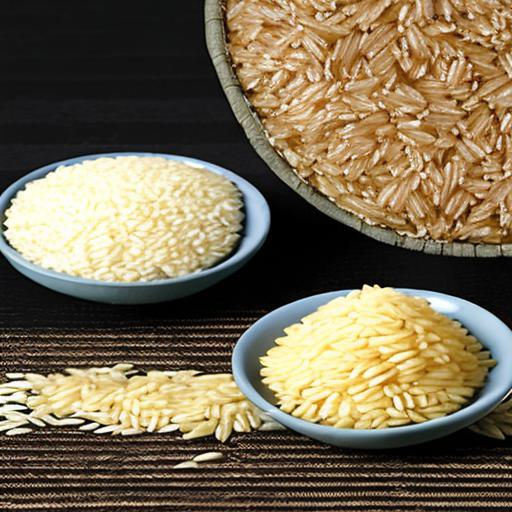
When deciding between parboiled rice and brown rice, considering their nutritional profiles can be enlightening. Both types of rice offer various health benefits, but they differ in several aspects:
Fiber Content: Brown rice is a whole grain, meaning it retains its bran layer, which is rich in dietary fiber. A cup of cooked brown rice provides about 3.5 grams of fiber, contributing to improved digestion and promoting feelings of fullness. In contrast, parboiled rice has less fiber, with around 1.4 grams per cup.
Vitamins and Minerals: Parboiled rice stands out for its mineral content. Thanks to the parboiling process, it contains approximately 80% of the minerals found in brown rice. These include important minerals such as calcium, iron, and zinc, and almost all the B vitamins, with the exception of vitamin B12, which is not present in plant foods.
On the other hand, brown rice, being a whole grain, naturally has a rich nutrient profile. It contains more magnesium than parboiled rice—a mineral crucial for heart health and nerve function. Moreover, brown rice is an excellent source of selenium, a powerful antioxidant that parboiled rice lacks.
Glycemic Index: Parboiled rice has a lower glycemic index (GI) than brown rice. This means it raises blood sugar levels more slowly, making it a better choice for people with diabetes or those watching their blood sugar levels. The lower GI is due to the parboiling process, which alters the starches in the rice and changes how the body digests it.
Caloric Content: The caloric content of both types of rice is relatively similar. A cup of cooked parboiled rice contains about 200 calories, while the same amount of brown rice has about 215 calories.
In conclusion, both parboiled and brown rice have their nutritional advantages. While brown rice offers more fiber and magnesium, parboiled rice stands out for its lower GI and higher content of certain B vitamins. Depending on your specific dietary goals, one type of rice may suit you better than the other.
Parboiled Rice vs Brown Rice: Health Benefits
Both parboiled rice and brown rice have significant health benefits. Their nutrient-dense profiles contribute to various positive health outcomes:
Parboiled Rice:
Lower Blood Sugar Levels: Thanks to its low to medium glycemic index, parboiled rice doesn't cause a sudden spike in blood sugar levels, making it a good choice for those managing diabetes or pre-diabetes.
Healthy Digestion: Although it contains less fiber than brown rice, parboiled rice still contributes to a healthy digestive system by promoting regular bowel movements.
Rich in Vitamins and Minerals: Parboiled rice is high in B vitamins, especially B1 (thiamin), B3 (niacin), and B6, which are essential for energy production, nerve function, and heart health. It also contains vital minerals like potassium and magnesium.
Brown Rice:
Heart Health: Brown rice is a whole grain, high in dietary fiber which has been linked to lower cholesterol levels and reduced risk of heart disease. Its rich magnesium content supports heart health by regulating blood pressure and preventing heart disease.
Digestive Health: The high fiber content of brown rice promotes a healthy digestive system, preventing constipation and supporting a healthy gut microbiome.
Rich in Antioxidants: Brown rice is a good source of antioxidants, particularly manganese and selenium, which can help protect the body against damage from free radicals.
Weight Management: Brown rice's high fiber content and the complex carbohydrates provide a feeling of fullness, potentially aiding in weight management by reducing calorie intake.
When it comes to health benefits, both parboiled and brown rice have plenty to offer. Choosing between the two will depend on individual dietary needs and health goals.
Parboiled Rice vs Brown Rice: Taste, Texture, and Cooking
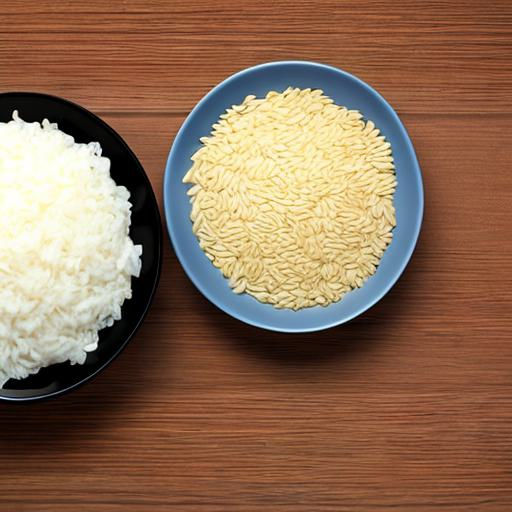
When choosing between parboiled rice and brown rice, it's not just about the nutrition - the taste, texture, and cooking methods also play a huge role. Let's dive into these aspects:
Taste
Parboiled Rice: It has a mild flavor that is slightly earthy but mostly neutral. This makes it an excellent choice for dishes where you want the rice to absorb the flavors of the other ingredients, such as in a biryani or pilaf.
Brown Rice: Brown rice has a distinct nutty flavor that's stronger than white or parboiled rice. This robust taste makes it a delicious choice for dishes where the rice stands on its own or complements other hearty flavors.
Texture
Parboiled Rice: Once cooked, parboiled rice grains are firm, fluffy, and separate. They are less sticky compared to other types of rice, making them ideal for salads, stir-fries, and any dish where you want the grains to remain distinct.
Brown Rice: Because of the retained bran layer, brown rice has a chewy texture that's much heartier than white or parboiled rice. This chewiness gives brown rice a satisfying bite that works well in grain bowls, stuffing, and side dishes.
Cooking
Parboiled Rice: Parboiled rice takes a bit longer to cook compared to regular white rice due to the parboiling process. However, it's less finicky about cooking times than brown rice and more forgiving if you leave it on the stove a few minutes too long.
Brown Rice: Brown rice generally takes the longest time to cook of all rice types. This is because the water needs to penetrate the bran layer, which takes time. However, the extra cooking time is well worth it for the nutrient boost and the delicious, nutty flavor of the cooked grains.
Both parboiled and brown rice have their unique tastes, textures, and cooking methods, each adding its own charm to different dishes. Choosing between the two ultimately boils down to personal preference, dietary needs, and the requirements of the recipe you are following.
Factors to Consider When Buying Rice
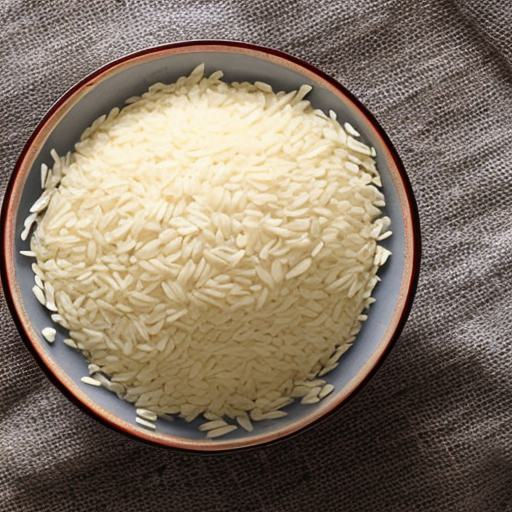
Choosing the right type of rice can significantly enhance the flavor and nutritional value of your meals. Here are some key factors to consider when buying rice:
Dietary Needs: If you have specific dietary needs or health goals, this will heavily influence your choice of rice. For instance, if you're managing your blood sugar levels, you may opt for parboiled rice due to its lower glycemic index. If you're seeking high fiber content, brown rice would be your go-to.
Taste Preference: Do you prefer a rice with a neutral flavor that can take on the taste of the dishes it's served with? If so, parboiled rice is a good choice. Or do you prefer a grain with a robust, nutty flavor that can stand on its own? In this case, you might opt for brown rice.
Cooking Time: Brown rice takes longer to cook than parboiled rice. If time is a major concern for you, parboiled rice might be a more convenient option.
Nutritional Content: If you're focused on a nutrient-rich diet, you might want to compare the nutritional content of parboiled and brown rice. While brown rice is richer in fiber and certain minerals like magnesium, parboiled rice is higher in some B vitamins.
Recipe Requirements: Different recipes call for different types of rice based on their texture and how they absorb flavors. Consider what kind of dish you'll be making when choosing your rice.
Remember, there's no one-size-fits-all when it comes to choosing rice. It all depends on your individual preferences and needs. Whether it's parboiled rice or brown rice, both varieties offer valuable nutrients and have their unique place in the culinary world.
How to Store Parboiled and Brown Rice
To maximize the shelf life and maintain the quality of your rice, proper storage is essential. Here are some guidelines on how to store parboiled and brown rice:
Parboiled Rice:
Parboiled rice has a longer shelf life compared to brown rice due to its processing. Store it in a cool, dark place in a tightly sealed container to keep out moisture and pests. Under these conditions, it can last for up to two years.
Brown Rice:
Because it's a whole grain and retains its bran and germ, brown rice has a higher oil content, which can cause it to go rancid over time if not stored properly. It should ideally be stored in a tightly sealed container in the refrigerator to extend its shelf life, where it can last for 6-12 months. If you have a large amount, you can also store it in the freezer to extend its shelf life further.
Regardless of the type, it's generally a good idea to buy rice in quantities that you'll use within a few months. Always check the color, smell, and texture of the rice before cooking. If it develops an off smell, changes color, or shows signs of pests, it's best to discard it.
Proper storage not only extends the shelf life of your rice but also ensures that you're getting the best quality and nutritional value from each grain when you cook it.
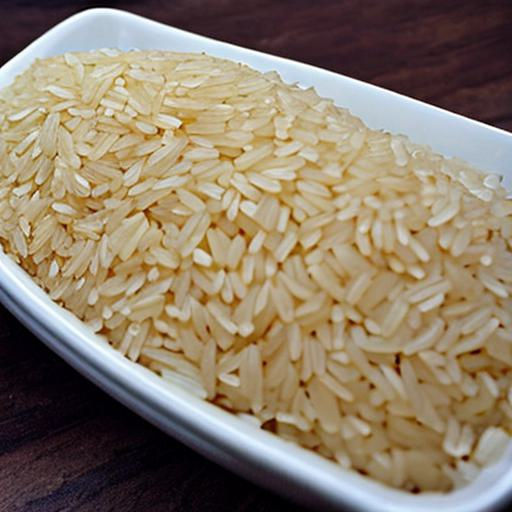
When it comes to parboiled rice vs brown rice, it's clear that both varieties bring unique qualities to the table—quite literally! Both forms of rice have their own advantages, and the choice largely depends on individual preferences, dietary requirements, and the specific demands of a recipe.
Parboiled rice, with its unique processing method, retains a significant amount of its natural nutrients and offers a lower glycemic index, making it a great choice for those managing their blood sugar levels. Its firmer texture and ability to stay separate when cooked make it ideal for dishes like stir-fries, salads, and pilafs.
On the other hand, brown rice, being a whole grain, is a fiber powerhouse. Its higher antioxidant content and heart-friendly attributes make it a popular choice among the health-conscious. The chewy texture and robust, nutty flavor make brown rice a hearty addition to any meal.
In the end, whether you reach for parboiled or brown rice at the grocery store will depend on your personal health goals, taste preferences, and culinary needs. But now, armed with a deeper understanding of these two varieties, you can make that choice with confidence.
As always, diversifying your diet is key to balanced nutrition, so why not alternate between both types and enjoy the unique benefits they each offer?
We hope you found this guide helpful in understanding the differences and similarities between parboiled rice and brown rice. So, the next time you're out shopping for rice or planning a meal, you'll know exactly which type to choose.
For original Basmati Rice and parboiled rice, Get a Quote from us.

Comments